Sept. 10, 2016 Update World Suicide Prevention Day is flooding my Twitter account, with poignant posts pointing to the desperate need for mental health resources and outreach, especially among youth and children.
With this in mind, I’m going to tweet a loud ‘shoutout’ to organizations making a huge difference in this dialogue, from symptoms, outreach and support at ReachOut.com to Crisis Text Line to the ongoing work of the Trevor Project and their specific LGBTQ services(I still love their three word: “Talk to Me” prevention campaign, which has segued to a “We are here” 24/7-365 lens)
Last but not least, a reminder of “means reduction” as a parental pragmatic prevention, removing the weapons/tools available to vulnerable youth in snap judgment…Because Means Matter!
Thank you all for your stellar, ongoing prevention work and collaborative conversations on mental health using social media in positive ways, like the twitter hashtag #MHSM (mental health social media).
Jan. 8, 2016 Update: Disturbing article on TNW about kids and depression that is screaming for solutionary balance on the data set front. I wish I had Pew Internet Research data to share the uplifting aspects of social media beyond this CNN piece, but will link here in the hope that they include the great work of folks like the I Can Helpline and CrisisTextLine.org and even dive through the “Positive Picks” category to see how teens have used online communities and gaming to PREVENT mental health spirals too…Alas, I’m still in need of more data to widen the TNW zoom lens to a larger landscape, so please ping with critical thinking like Pro/Con.org does, as I found that piece to be important but…well…depressing.
Aug. 12, 2014 Update: Int’l Youth Day roundup of resources on mental health matters, youth voices, and the importance of outreach. Michele Borba’s post about recognizing depression in young children is VITAL and timely…And given the suicide of children’s film favorite, Robin Williams, this post about helping kids cope with loss is particularly poignant as well.
May 12, 2014 Update: It’s Mental Health Awareness month; be sure to check out important new resources like CrisisTextLine.org (feature coming soon with more youth-tech-health impact via innovators at #YTHLive)
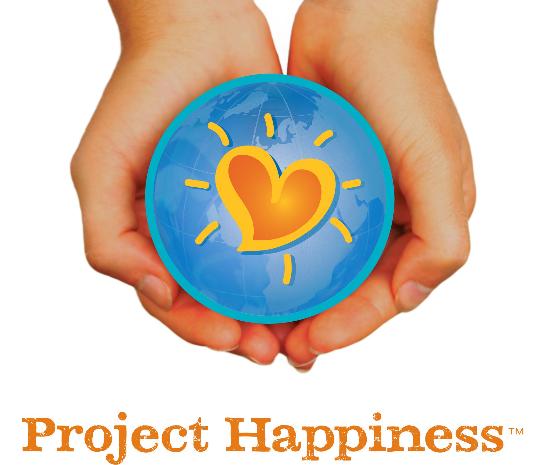 (Original Post: May 11, 2011) ”If you want to be happy, be.” ~Leo Tolstoy May is mental health awareness month, and though Tolstoy’s simple mandate has philosophic wisdom in its underpinnings, I think the majority of 21st century youth would balk, “Hey, not so fast, Leo.” Whether it’s the brilliant(ly subliminal/subversive) marketing of Coke’s “Happiness Machine” viral video ( how they created the campaign here) or movie media like the newly re-cut screening of Project Happiness through California Institute of Film there’s no doubt happiness is a unifying theme that’s spawned introspection and full tilt pursuit far and wide across the globe…
(Original Post: May 11, 2011) ”If you want to be happy, be.” ~Leo Tolstoy May is mental health awareness month, and though Tolstoy’s simple mandate has philosophic wisdom in its underpinnings, I think the majority of 21st century youth would balk, “Hey, not so fast, Leo.” Whether it’s the brilliant(ly subliminal/subversive) marketing of Coke’s “Happiness Machine” viral video ( how they created the campaign here) or movie media like the newly re-cut screening of Project Happiness through California Institute of Film there’s no doubt happiness is a unifying theme that’s spawned introspection and full tilt pursuit far and wide across the globe…
Today we’re highlighting media projects that uplift and inspire to help people DISCOVER their OWN paths to happiness in our ‘positive picks’ focus.
As we honor those serving up solution-based ideas using social media on the frontlines of the healthcare revolution for prevention, intervention, and support for kids’ health and well-being, I want to step back to add context for why it’s so critical to address the issue of childrens’ mental health in the first place.
Today Show Parenting pundit Michele Borba in a post called The Kids Are NOT All Right, cites a new UCLA study of 200,000 incoming freshmen as “the saddest and overwhelmed group in a quarter of a century” with students’ mental health plummeting to a 25 year all-time low.
Kids Health.org states “As many as 1 in every 33 children may have depression; in teens, that number may be as high as 1 in 8.” National Institute of Mental Health has new data out the wazoo on children and adolescent depression, but I’m more interested in how did we get here and what can we do about it to create CHANGE and shift this stress level that’s made a ‘carefree childhood’ a thing of the past.
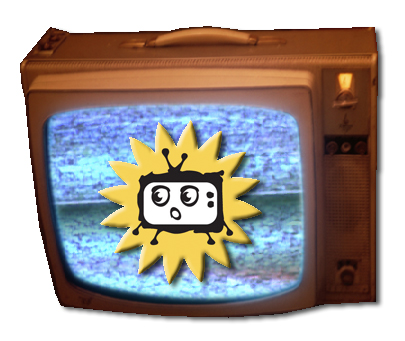 I’m not going to ‘blame the media’ in retro nostalgia wistfulness for indie thought over formula factor, BUT in our solutions-based approach, we can’t ignore the problems themselves, namely that high volume saturation has created environs where media and marketing are often defining kids before they can even define themselves.
I’m not going to ‘blame the media’ in retro nostalgia wistfulness for indie thought over formula factor, BUT in our solutions-based approach, we can’t ignore the problems themselves, namely that high volume saturation has created environs where media and marketing are often defining kids before they can even define themselves.
I’ve used that phrase repeatedly talking to anyone who will listen, including my entire speech at the Women Leaders for the World convening, citing the ‘whys’ of my passion to ignite change with Shaping Youth…
I DO think we can flip the message so media is a mass distribution channel SOLUTION for change. We need to give industry producers a media mindfulness bracer and incentivize quality content over raunchy, cruel content creating pressure cooker kids…
That said, it’s easy to see how kids’ emotional landscape is skewed if they don’t happen to find themselves falling neatly into what’s being trumpeted as “what happiness looks like…especially when perpetually influenced by Hollywood’s version of “happily ever after” (great analysis on gender and media in Psychology Today by Dr. Liz Meyer author of critical pedagogy texts and Gender, Bullying & Harassment)
Further, when we see the princessification and the recent shift in marketing dynamics resulting in stats like this WSJ article citing almost 100% of female characters in G-rated movies have aspirations of “either romance or royalty” happiness is being set up as a narrowcast “epic fail” as the kids might say.
So what DOES happiness look like?
How can we reframe depression with troubled teens and trauma?
Project Happiness is about to show ONE variation this coming Sunday in their newly cut documentary screening through California Film Institute about four Santa Cruz teens navigating through their own personal obstacles of loss and alienation to happiness.
The IMDB promo says,“From the alleys of Nigeria and the beaches of California to the mountains of India, ordinary young people lead us on an extraordinary journey to explore the nature of lasting happiness and end up starting a movement.”
Mind you, I haven’t seen this version of the FILM yet, but I HAVE thoroughly read their education curricula and handbook for youth and literally couldn’t put it down…I’m a big fan of the way Project Happiness puts forth “by kids for kids” experiential tidbits so kids can begin to piece together their puzzles and figure it out for themselves.
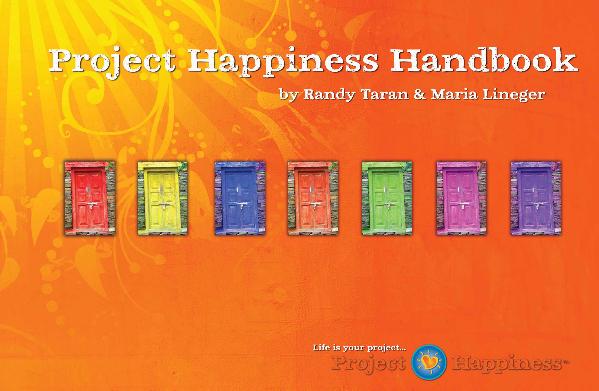 Their 195 pp color-soaked handbook of whimsy and fun does just that, with socio-emotional lessons drawn from research in positive psychology and strength-based character development, giving kids the TOOLS to build emotional resiliency on their own, with their own exercises to engage with, in their own conversational language of youth culture.
Their 195 pp color-soaked handbook of whimsy and fun does just that, with socio-emotional lessons drawn from research in positive psychology and strength-based character development, giving kids the TOOLS to build emotional resiliency on their own, with their own exercises to engage with, in their own conversational language of youth culture.
As a former military brat, I was lucky enough to glean those tools by default, traveling the globe early and often landing on my feet, cultivating powers of observation and leadership to ‘blend’ and also break through with my own distinct identity no matter what circumstances might be.
Granted, I got plopped into some weird ones, and it made me realize early on that I needed to write my own script for what happiness would look like rather than wait for it to emerge out of circumstance. Project Happiness puts some of those life lessons into experiential ‘what if’ form and guides kids on their own journey to figuring out who they are, how to make it work for them.
Since Shaping Youth is a non-partisan, non-religious based non-profit, I should add that Project Happiness has definitive spiritual ties as you can see by the interview with the Dalai Lama, Richard Gere, George Lucas and other stellar personalities in the film trailer promo.
To me, I view that as ancillary and adjunct rather than defining, since it’s written as part of the global literacy movement of cross-cultural humanism…‘one world thinking versus one point of view’ but consider yourself ‘disclosed.’
Next up? One of my all-time favorite media projects that uses handbooks, video clips and workshops in multimedia mode to bring about ‘aha’ moments of self awareness and discovery is Asset Based Thinking: Change the Way You See Everything(for teens) by ad industry veteran Hank Wasiak and Dr. Kathy Cramer.
I wrote a bit about their work when their teen book premiered, and he shared the very positive post, “Teens, Our Next Greatest Generation” on Shaping Youth but I’ve used their work repeatedly since then to flip media messages (and my own internal compass!) when I slide into ‘deficit based thinking versus asset-based’ mindsets.
From free tips and tools, quizzes and quick media clips to get the gist of their work fast, to the heavier lifting created by delving deeper into what’s getting in the way of our own happiness, Wasiak’s youth work has given ME a bracer many a time when I fall into the blues feeling like ‘the media messages’ are too big and too toxic to make sustainable change.
Can’t tell you how many times just this week I’ve used Asset Based Thinking to ‘see things differently’ when adversity comes a-calling…In fact, this whole “positive picks” series arose out of MY own need to take a water sprinkler to my psyche and hose off the media mind pollution and instead try to refocus on the landmark achievements of what social media has done to HELP and SUPPORT teens’ mental health and happiness leaving massive wakes in the current of change.
Along those lines, my next pick is no surprise, as long time readers know I’m a huge fan of funny man and youth motivational speaker Josh Shipp, whose recent book Teen’s Guide to World Domination: Life, Liberty & the Pursuit of Awesomeness had me laughing AND crying at the raw truths of teen life in the trenches.
Playful, poignant and spot on in its Yoda-like wisdom, Josh’s new book is a mashup of ghosts, ninjas, pirates, robots, vampires, zombies, career goals, and other controlling internal personas that lands a loud and clear message: Teens, if you don’t dominate your own world, someone else will.
Packed with witticisms and pragmatics for navigating life’s stickiest scenarios (e.g. “Introduce the elephant in the room and move on”—“Make sure you’re “packing heat” (as in Google, to tackle topics and obscure YouTube references) and reminding teens “entrepreneurs pour their lives into ideas that everyone else thinks are stupid,”) this book gives voice to hope, promise, and get off your arse thinking in a positive pursuit of happiness to ensure teens don’t end up marching down the life path of lemmings to become bitter, unfulfilled “porch grouches, hollering to get off the lawn.” (the guy is simply hilarious)
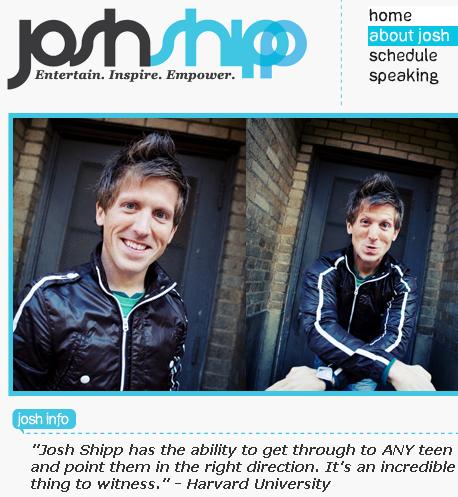 Josh’s book uses humor and first person storytelling of his foster-child ping-pong upbringing to jolt readers into amazement and reflection (the man knows some serious adversity and has been through many a fire).
Josh’s book uses humor and first person storytelling of his foster-child ping-pong upbringing to jolt readers into amazement and reflection (the man knows some serious adversity and has been through many a fire).
Hank’s book nudges toward the brain science and positive neurons firing when we look at life from a particular ‘half full’ vs half empty point of view. Both authors offer pragmatic but immensely ponderable POSITIVE ways to nudge toward happiness using the tools to pursue those life paths productively…
As a die-hard existentialist, I adore Josh’s “Be the hero of your own story” 21st century makeover, because he takes a read it and heed it approach without any room for mamby pamby shoulda couldas down the line.
He essentially puts forth, ‘hey teens…if you don’t dominate your OWN world, someone else will’ with edgy candor, frank advice and raw, real truisms you just can’t duck-n-dodge.
Simply put: “If YOU don’t choose to control your own world, then people will call the shots for you. The drama will control you—other people’s expectations will control you. The villains (your past, your fears, bad relationships, addictions) will ALL line up to control you…” –Josh Shipp
Totally different philosophic styles but equally compelling in positive, take charge messaging, these books offer hands-on tips, exercises and suggestions written in a conversational style that appeals to youth in their own sphere, helping discern identity and empowering youth while redirecting stresses, depression and volatile churn that goes with adolescence.
This media is like arming youth with a shield against the ubiquitous teen drama portrayals served up daily in surround sound (often hypersexualized and objectified to make a dime and spike ratings I might add) AND giving them a saber to slay the fire-breathing profit dragons selling insecurities to make kids feel ‘less’ in order to sell confidence back to them one product at a time…
Working with teens and youth I sometimes feel like they’ve had their childhood snatched and turned into more of a battle zone of ‘getting through it’ rather than enjoying it, and as you can tell, I hold adults and profiteering largely responsible for those stressors.
Though media and marketing can be part of the problem, it’s also part of the solution…
Just as it can ‘tear down’ it can also ‘build up’ and support youth through increasingly helpful peer to peer networks using social media as preventive deterrent for risky behaviors and mHealth and anonymity working in positive interventions as a lifeline in high risk health situations.
Nowhere has media and marketing been able to cut a deeper swath than social media and mobile health’s instant support and responsiveness with a variety of teen topics ranging from sexual health to dating violence, suicide prevention to bullying, eating disorders to depression and anxiety.
One of my favorite new adolescent resources on the scene in the US is ReachOut.com with a storied history in Australia brought to life to me personally through my esteemed colleague and Age of Conversation editor, Gavin Heaton. (Here’s my post about his fabulous book The Perfect Gift for A Man: Reinventing Manhood with all proceeds going toward the Inspire Foundation in Australia)
In less than a decade, ReachOut Australia has seen a 56% reduction in teen suicide rates, and is widely known by 3 out of 4 Australian youth for their tenacity in ‘going to where the kids are’ (social media + over 300schools visited etc) to bring support and healing conversations to teens and youth through safe online hubs where kids can get the help they need freely.
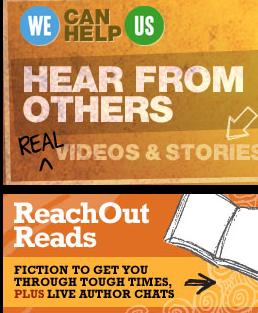 Now, ReachOut has expanded to the US and they’re going global, not just with facts and antidotes to ‘get through tough times’ but real life stories written by teens and young adults to “meet them where they are” and help millions of young people lead happier lives. (They also have a ‘get help’ and ‘add your voice’ section along with fact sheets on a wide array of youth issues, ReachOut FAQs here)
Now, ReachOut has expanded to the US and they’re going global, not just with facts and antidotes to ‘get through tough times’ but real life stories written by teens and young adults to “meet them where they are” and help millions of young people lead happier lives. (They also have a ‘get help’ and ‘add your voice’ section along with fact sheets on a wide array of youth issues, ReachOut FAQs here)
ReachOut also supports youth in real time on Twitter so kids don’t feel so alone with programs that pertain like the live author chats called Reachout Reads with vetted books by YALSA on topics many teens can relate to, from frenemies to body image. (for example today NYT bestselling author Lisa McMann is on board at 5pm PST for Q&A–Cryer’s Cross and soon “The Unwanteds” coming AUG 30, 2011)
When tangible, trackable change through online resources take hold, whether for ReachOut support, peer to peer social norming and intervention like the fabulous A Thin Line.org campaign to reduce digital drama (full post to come in the anti-bullying positive picks) it’s social media at its best and most empowering…
Yep, The Inspire Foundation is aptly named. Positive picks and social change orgs like these are surfacing, soaring and sustaining themselves while making change with massive momentum.
Some might argue social media’s good work for teens’ mental health only helps to ‘undo the damage’ of mass media’s role in portraying incivility so prolifically with snark and venom, bullying and ‘mean girls’ –After all, from movies and Reality TV to cartoons and webisodes, it’s now shifted to social norms almost ‘expected’ as a scenario teens have to workaround daily…
Others maintain teen angst has ALWAYS been everpresent ‘it’s just more public now’ but I think if you take a strong look at ‘what’s changed’ in teen times developmentally in the ‘too much too soon’ categories of age compression and shoving adulthood down kids’ throats you’ll see my point.
Whether it’s test-taking stresses as seen in the film Race to Nowhere, food supply-driven hormones and early onset puberty, elementary school kids being ‘recruited’ and groomed as sports commodities or mathletes, or sexual experimentation at earlier ages with age compression and harm of early sexualization, it’s readily apparent these youth pressures are very, very real, created by a society more interested in profit over public health.
It’s imperative that we USE media to HELP kids find their joy and identity and happiness since we (society) are the ones that took it away in the first place…
 Another fabulous org, Hardy Girls Healthy Women, co-founded by Shaping Youth advisory board member Lyn Mikel Brown of Packaging Girlhood.com has made great strides having kids ‘talkback’ using media literacy and analysis to remix messages targeting them and push them back to the corporations creating them in ‘leave us alone mode.’
Another fabulous org, Hardy Girls Healthy Women, co-founded by Shaping Youth advisory board member Lyn Mikel Brown of Packaging Girlhood.com has made great strides having kids ‘talkback’ using media literacy and analysis to remix messages targeting them and push them back to the corporations creating them in ‘leave us alone mode.’
Now led by young adults with content created by preteens and teens, you’ll see examples of activism to Spark Change in the Powered By Girl group on Facebook, known simply as “PBG”. (some are hilarious)
HGHW is also helping youth and adults that help raise them discern the language of happiness through important workshops and online webinars in their new training institute to help navigate girlhood. Today, for example, national expert on teen mental health Lisa Machoian, Ed.M., Ed.D., author of The Disappearing Girl, Learning the Language of Teenage Depression will provide a nuanced conversation about eating disorders, body image and stigma to bring experienced help (and hope) to those who need it directly. Brilliant.
Their next HGHW webinar deconstructs media’s portrayal of gender and sexuality through the mass media lens titled Seeing Queerness Everywhere: Images of LGBTQ youth in Popular Culture and in Schools. Darla Linville, Ph.D.-May 19th, 3:00-4:30pm EST
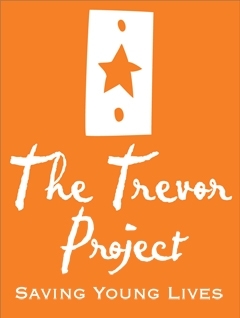 We’ll cover positive picks rallying against various types of bullying in schools (from School Climate’s BullyBust bystander program to GLSEN in an entirely separate post) but want to quickly segue to one last favorite for the use of media in positivepursuit of happiness…
We’ll cover positive picks rallying against various types of bullying in schools (from School Climate’s BullyBust bystander program to GLSEN in an entirely separate post) but want to quickly segue to one last favorite for the use of media in positivepursuit of happiness…
The Trevor Project, has outstanding “straight against hate” bridges and alliances that successfully cross over from ‘niche topic’ of gay rights to digital darling in the mass media for their all-inclusive “It Gets Better” campaign.
This single project has had the strongest, most inclusive spin-offs into multiple media quadrants with massive outreach at every age and stage, creating unity over polarity with a humanist voice speaking universally about raising the happiness quotient for teens and youth to give hope and promise for brighter days ahead.
Sometimes with severely depressed teens, that’s the magic note they need to hear and cling to. Let’s make sure it’s cutting through the clutter to resonate loudly and often. Hope for happiness. Promise for the future.
This is the latest video version of It Gets Better that premiered during the Glee episode last week, with Woody from Toy Story in the media mix. The Atlantic Wire reports some have already squawked and scoffed about Disney/Pixar joining the outreach to support youth, but I cannot think of a more POSITIVE message to send out into the world than one of teaching tolerance for diversity and humanity.
Thank you ALL for the amazing work you’re doing out there nudging people toward making Tolstoy’s quote accessible. As Emerson said, “We acquire the strength we have overcome”…so grateful for your presence reminding and inspiring youth daily.
May is Mental Health Month
Related Posts by Amy Jussel, Shaping Youth
Can New Media Curb Anxiety in Stressed Out Students?
Laramie Project: Using Media to Teach Tolerance (10yrs later)
Body Image: Tips For Teens To Survive The Media Morass
Are We Making Matters Worse By All the Body Image Chatter?
What Does A 13-Year Old Boy Know About Dating Violence?
Youth Advice Slinger With a Story To Tell: Josh Shipp
Josh Shipp’s Graduation Rap (Hope & Promise)
ABC’s of Life: What’s Your Gift to Graduating Youth?
Media Moments of Expectation: From What to What?
Meaningful Manga: Graphic Novels, Humanity & Growth
Role Modeling Resiliency: How Are Kids’ Coping Skills?
Girls Prescription for Self Worth-Respect Rx!
Overachievers: Interview w/Author of SuperGirls Speak Out
Kids, See How You’re Smart: Using Multiple Intelligences
Peace, One Day: Reach & Teach.com
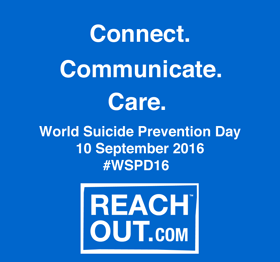










Amy,
I think that you just helped me pick my sister’s eighth grade graduation present. Thanks for that, and for another comprehensive set of resources.
Ann
What a great, well-researched article. Thanks for the mention Amy! Great start for parents looking for online mental health resources online, like KidsHealth for pre-teens and teens and ReachOut.com for teens and young adults.
@Ann, of course, I’m dying to know, which one gets wrapped up ‘ftw?’ 😉 And @Alex, my pleasure…your org is highly needed out there in the mix. Thank you both for all you do for youth DAILY.
Amy, great list of stuff. To your point about incoming freshman being depressed – I was in a meeting a couple of weeks ago with a residential life manager at a major university who explained that they’re restructuring their help resources to better meet the need of a huge segment of the freshman who are depressed and have a range of emotional issues. Positive media can be part of the solution, I think – especially when the students themselves are making the media.
Hi Hans —Completely agree with the UGC (user generated content) being integral to the success of the outreach and how it lands on kids…It’s one of the reasons why I love the “A Thin Line.org” campaign by MTV where the kids weigh in and assist each other in terms of what crosses the line in a wide array of bullying /socio-emotional issues http://www.athinline.org